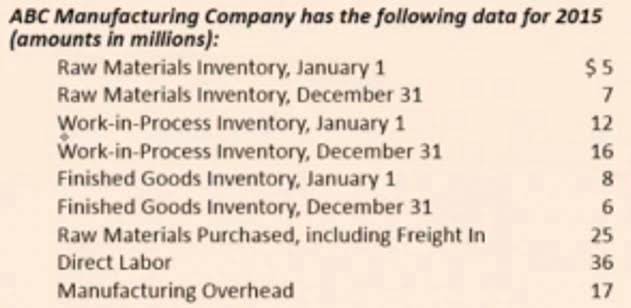

Future partners need to cultivate relationships within and outside the firm, as these connections can provide guidance, mentorship, and business opportunities. Engaging with professional associations, attending industry conferences, and participating in networking events can enhance visibility and open doors to potential client engagements. If the retiring partner’s interest is purchased by an outside party, the retiring partner’s equity is transferred to the capital account of the new partner, Partner D.
- Tom Ravlic is a journalist and author with a deep expertise in accounting, corporate governance and regulatory affairs.
- Net Income of the partnership is calculated by subtracting total expenses from total revenues.
- The primary financial statements for a partnership include the balance sheet, income statement, and statement of cash flows.
- Worse still, managers avert their eyes if there is a transitory financial benefit to allowing it to happen, burying it under layers of self-congratulation, hefty bonuses and holidays someplace fancy like Aspen.
Withdrawal of partner
Prior experience with FASAB standards is not necessary and even those that have worked with FASAB standards in the past will benefit from this new training approach that organizes the materials by topic rather than by individual FASAB standards. Attendees will be able to freely ask questions, learn together in small groups where they can apply knowledge learned using the SBR case-study approach. Attendees will be able to freely ask questions, learn together in small groups analyzing and critiquing portions of the standards, and be able to immediately apply what they have learned. Federal generally accepted accounting principles (GAAP) are based on federal accounting standards promulgated by the Federal Accounting Standard Advisory Board (FASAB). This method is straightforward and often used in general partnerships where each partner contributes equally to the business.
Allocation of Profits and Losses
What the FRC was concerned about more than anything is the absence of fear of the regulator and the committee recommends a return to more QuickBooks random reviews to keep accounting and auditing professionals on their toes. Failure to seek expert advice on a matter as a signing audit partner in an area in which you are inexpert is a cardinal sin that would be viewed dimly by regulators and professional bodies alike. It is against the corporations law, auditing standards and ethical standards for an auditor to muddle through without the assistance of a subject matter expert in a specialist area where required.


Public-Private Partnerships: Disclosure Requirements
This guide aims to provide a comprehensive overview of essential partnership accounting practices, offering valuable insights for both new and experienced accountants. Share of residual profitThis is the amount of profit available to be shared between the partners in the profit or loss sharing ratio, after all other appropriations have been made. The profit or loss sharing ratio is sometimes simply called the ‘profit sharing ratio’ or ‘PSR’. Partners must be aware of the tax implications of liquidating assets and distributing proceeds.


FY 25 Training Calendar


They may need to navigate personal financial planning challenges, such as tax implications related to partnership income. Engaging with a financial advisor specializing in partnership structures can provide valuable insights into optimizing financial strategies and safeguarding personal wealth. If a retiring partner withdraws cash or other assets equal to the credit balance of his capital account, the transaction will have no effect on the capital of the remaining partners. If a certain amount of money is owed for the asset, the partnership may assume liability. In that case an asset account is debited, and the partner’s capital account is credited for the difference between the market value of the asset invested and liabilities assumed. Even the most harmonious partnerships can encounter disagreements, and having a predefined method for addressing these issues can save time, money, and relationships.
Interest on Drawings


The tax responsibility passes through to the individual partners, who are not partnership in accounting considered employees for tax purposes. There is no federal statute defining partnerships, but the Internal Revenue Code (Chapter 1, Subchapter K) includes detailed rules on their federal tax treatment. When drafting a partnership agreement, an expulsion clause should be included, detailing what events are grounds for expelling a partner. A partnership is a formal arrangement by two or more parties to manage and operate a business and share its profits. The purpose of this article is to assist candidates to develop their understanding of the topic of accounting for partnerships. As such, it covers all of the learning outcomes in Section H of the detailed Study Guide for FA2.
Income Allocations
At least one other is a silent partner whose liability is limited to the amount invested. This silent partner generally does not participate in the management or day-to-day operation of the partnership. The partnership itself must file an informational return, typically Form 1065 in the United States, which provides a detailed account of the partnership’s financial activities. This form includes a Schedule K-1 for each partner, outlining their share of the income, deductions, and credits. Properly managing these tax documents is crucial to ensure compliance and avoid penalties. Staying informed about these tax implications can help optimize the partnership’s tax liabilities and enhance overall financial performance.
- Each partner can make decisions on behalf of the partnership, and profits and losses are typically shared equally unless otherwise agreed upon.
- General partnerships are the simplest form, where all partners share equal responsibility for the business’s debts and obligations.
- They agree via a memorandum of understanding they would operate as a firm network across Australia.
- Because of this, individuals who wish to form a partnership should be selective when choosing partners.
- The TPB is a body that has undergone a review process after a decade of operation.
- These types of ratios are also appropriatewhen the partners hire managers to run the partnership in theirplace and do not take an active role in daily operations.
- A contribution will be a credit entry in the capital account and a debit entry in the bank account, and a withdrawal will be a debit entry in the capital account and a credit entry in the bank account.
Emotional intelligence plays a significant role in managing relationships and fostering a positive team environment, helping build trust and collaboration. Bonus is the difference between the amount contributed to the partnership and equity received in return. Each of the existing partners may agree to sell 20% of his equity to the new partner. The result for the new partner will be the same as if a single owner sold him 20% interest. Had there been only one partner, who owned 100% interest, selling 20% interest would reduce ownership interest of the original owner by 20%.
- Salaries and interest paid to partners are considered expensesof the partnership and therefore deducted prior to incomedistribution.
- Partnerships are generally treated as pass-through entities for tax purposes, meaning that the profits and losses are reported on the individual tax returns of the partners rather than at the partnership level.
- These financial transactions must be clearly defined in the partnership agreement to avoid misunderstandings and ensure smooth operations.
- If the partnership agreement specifies how profits are to be shared, losses must be shared on the samebasis as profits.
- In general partnerships, all partners typically have an equal say in decisions, fostering a collaborative environment where diverse perspectives can be considered.
This can include regular distributions of profits, as well as withdrawals of capital. The partnership agreement should outline the conditions under which withdrawals can be made, including any limitations or requirements for advance notice. For instance, some partnerships may allow for periodic profit distributions while restricting capital withdrawals to prevent destabilizing the business’s financial foundation. Clear guidelines on withdrawals help to maintain financial stability and ensure that all partners are treated fairly. (a) Do not put partners’ salaries or interest on capital into the main income statement.
